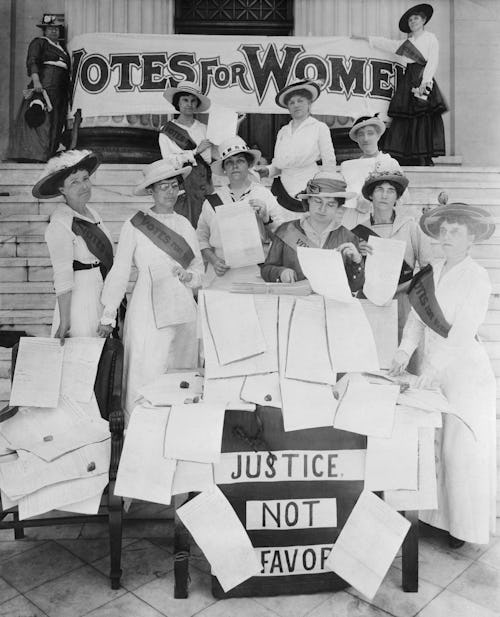
Resistance Fashion: A Look Back and a Vision Forward
Through the decades, the evolution of women’s fashion has driven societal change, challenging established norms around gender, class, race, and power. From the white suits donned by suffragettes to Twiggy’s iconic miniskirts, women have used fashion as a rallying cry for rebellion. Fashion historian Emma McClendon highlights the various expressions of resistance, ranging from denim and leather jackets to the classic protest T-shirt—each carrying its own meaning within different cultural contexts of the 20th century.
In some cases, resistance dressing has been overt and clear. The white suit of the suffragettes stands out as a powerful statement, while during the civil rights movement, two distinct dress codes emerged. One approach, promoted by Martin Luther King Jr., emphasized formal Sunday attire, while another, adopted by the Student Nonviolent Coordinating Committee, celebrated casual denim overalls in solidarity with working-class Black communities in the South. This evolution demonstrates how women’s fashion has morphed over time into a canvas for expressing dissent.
Historically, the notion of using fashion as a form of rebellion has deep roots, gaining significant momentum particularly over the last 150 years. The movement began with bloomers in the mid-19th century, advocated by Amelia Bloomer, who pushed for women to sport looser pants under shorter skirts as an alternative to the restrictive garments of the time. This choice—though considered modest by today’s standards—was met with outrage due to its subversive nature, highlighting a historical tension between the objectification of women’s bodies and their acts of rebellion.
The 1920s marked a pivotal moment with the emergence of flapper fashion, characterized by short skirts and bobbed hairstyles. Women embraced this bold style, which represented a rejection of Victorian conventions. Despite the tightly constraining underwear common among flappers, the movement symbolized greater social and sexual freedoms, even as society objectified women’s bodies in reaction.
Moving into the 1940s, World War II saw women taking on roles in factories, sporting trousers for the first time. This breaking of gender barriers was immortalized in the figure of “Rosie the Riveter,” representing women’s strength and independence. In the 1960s, the miniskirt emerged, propelled by designers like Mary Quant and models such as Twiggy. While it became a symbol of sexual liberation, it also perpetuated the exclusive beauty standards of the era, favoring a very specific body type.
As we approached the 1980s, the power suit—with its sharp shoulder pads—symbolized women’s quest for authority in corporate environments. This style merged femininity with ambition, though it often reemphasized traditional ideals of beauty and sexuality through its design.
In today’s fashion landscape, the concept of resistance continues to evolve. The rise of gender-fluid fashion challenges traditional clothing binaries, allowing women to embrace styles previously reserved for men. The election of Donald Trump in 2016 ushered in a wave of women opting for more comfortable and less gendered attire, marking a shift in the high-fashion narrative.
The “free the nipple” campaign illustrates a desire for body acceptance and challenges societal norms surrounding beauty and modesty. Celebrities like Pamela Anderson have embraced a makeup-free look, rejecting conventional beauty standards in favor of self-acceptance.
Looking ahead, societal shifts, including political changes, could ignite another wave of resistance fashion. Recent reactions to elections have seen women donning somber black attire as a form of collective mourning. This could evolve into something more assertive and defiant as the dialogue surrounding women’s rights and body inclusivity continues to develop.
With each cycle of resistance, fashion offers a canvas for women’s voices. As history has shown us, time will bring new opportunities for innovation and expression. In the future, voices like Phoebe Philo, renowned for blending masculine authority with feminine fluidity, could guide the next wave of women’s fashion into territories of empowerment and self-expression.






